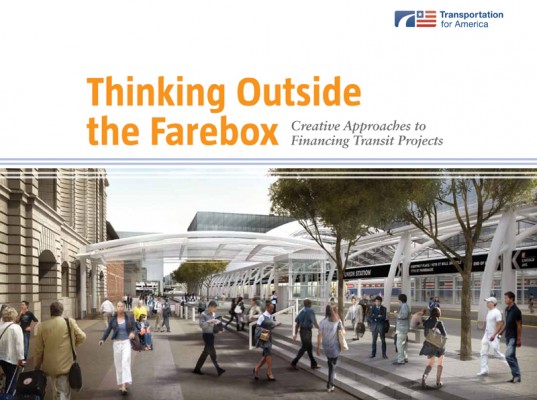Transit Financing Book (2012)
Creative Approaches to Financing Transit Projects
Download the full guidebook (10.8mb pdf)
The demand for public transportation service is at its highest point in 50 years. The causes are many: rising gas prices, an increasingly urbanized population, growing numbers of seniors, and the preferences of the “millennial” generation. These factors and more are contributing to soaring ridership on existing transit routes. And more communities of all sizes today are looking for funds to build and operate rail and bus lines than ever before.
A combination of ideological gridlock in Congress, dwindling federal gas tax revenues, and the elimination of earmarks have made the traditional approaches to building transit much more challenging. Yet despite these obstacles, many communities are finding creative ways to move ahead.
This guidebook is designed to help community leaders get from Point A—the desire to meet the demand for transit—to Point B—raising the money needed to build and operate it.
Growing public interest in transit is leading many communities to look for ways to expand their offerings, but as more communities seek to develop or expand transit systems, the already over-subscribed traditional federal programs for transit won’t be able to fund every project seeking assistance. To make the money go further, the New Starts transit program has most often covers just one-half of project costs, down from 80 percent, with some projects getting as little as one-third of their required total. Even with this policy in effect the waiting list grows longer every year.
But all is not lost. There are ways to pay for new transit investments without waiting so long, and a growing number of communities are pursuing them. But doing so requires more sophistication in the art of project finance than has been needed in the past.
Someday—soon, we hope—the federal government may respond to the high level of demand for new transit investments by increasing funding available to communities. Those of us who aspire to provide these options for people in our communities must continue to work toward that goal.
Download it for free



